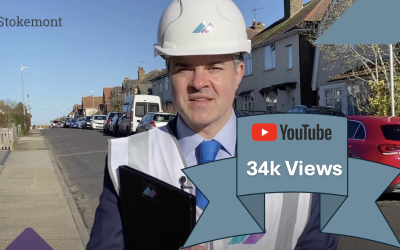In today’s party wall surveying blog post, we are going to be taking a look at some of the misconceptions that comes with the Party Wall etc Act 1996’s procedures.
The party wall procedures and permitted development are two different issues that often come into contact with each other on a residential property. How each one influences the other is chronically misunderstood by people.
Permitted Developments
According to the Town and Country Planning Act 1990, there is a general requirement that any structural work that takes place on a building, like extending a house, requires planning permission.
A permitted development is basically, at the fundamental level, any building work that has been granted by the local authority, under the Town and Country Planning Order 2015. Basically, this order grants the ability to make these kinds of extensions without further permission.
When Does this clash with Party Wall Surveying Procedures?
So, a prime example of when the party wall surveying procedures comes into the equation is if a building owner wants to build a dormer extension on the roof. As a result of this, they have to raise the party wall that separates their property from the property of their neighbour.
Building work, in this case, can only be permitted development if it is work that falls within the curtilage of the property. Unfortunately, there is no minimum definition of a curtilage, so it’s often considered to be anything that is within the legal boundaries of your home.
Obviously, the boundary between two different properties is often separated by the party wall, but the actual boundary is usually straight down the middle of the wall. This means that there is a degree of confusion that turns up when people are trying to work out if the half of the wall that constitutes the boundary is the same half of the wall that falls within the definition of the curtilage.
It’s important to remember that when it comes to the correct legal position on the subject, the boundary of the cartilage, and the legal boundary are not always the same thing.
Stokemont’s Final Thoughts
Now obviously, identifying how the party wall surveying procedures and permitted development go together is quite tricky. Ultimately, you would be wise to contact the local authority if you weren’t 100% sure on how it all worked.
You do need to know how it all ties together, because this is important for getting the best results. There are a lot of legal disputes that can arise if you get this wrong, so more often than not, it’s better to err on the side of caution and consult with a professional.
After all, considering that everything is done on a case-by-case basis, it’s difficult to apply a generalised role to the situation, which means that you do have to seek expert help.
In any event, if construction works that do fall within the realm of the party wall act are to be undertaken, we would advise ensuring that as much time as possible to allocated to the party wall procedures.
If you would like to discuss your party wall surveying requirements with our team of surveyors, give us a call today, we will be more than happy to advise.




